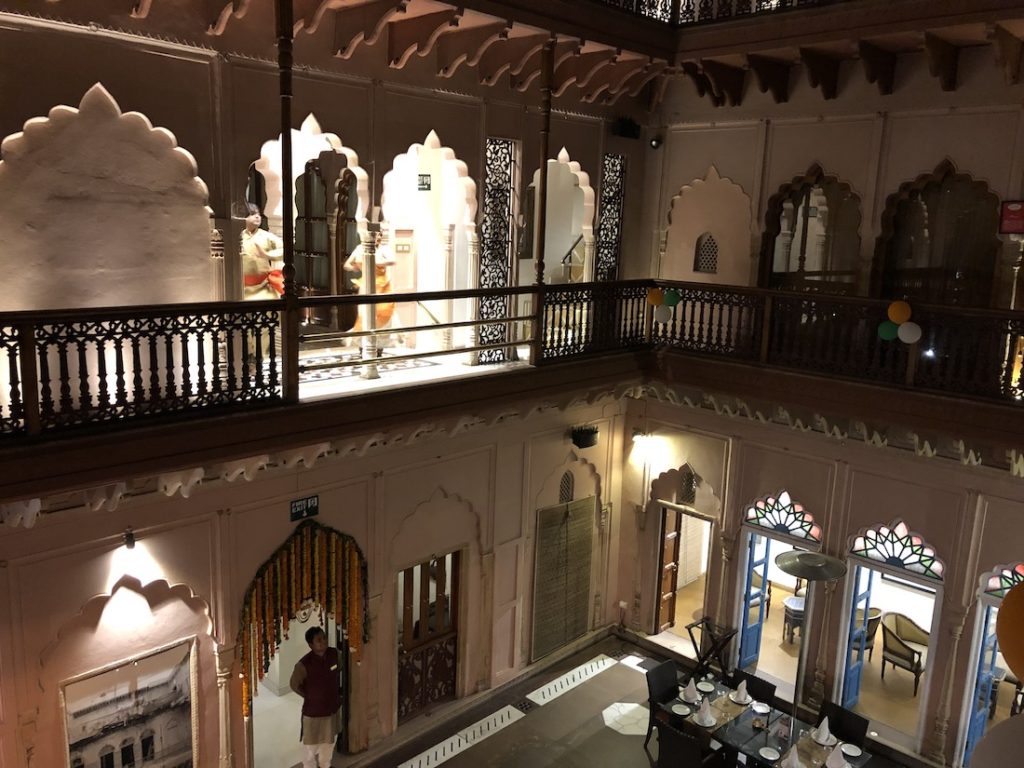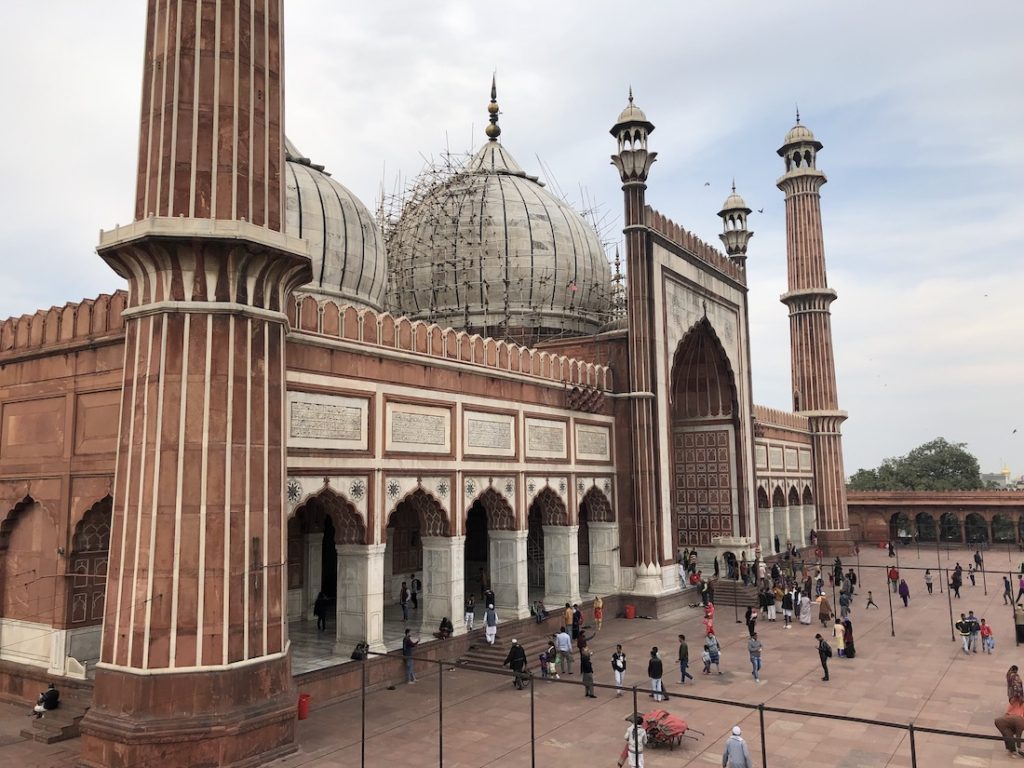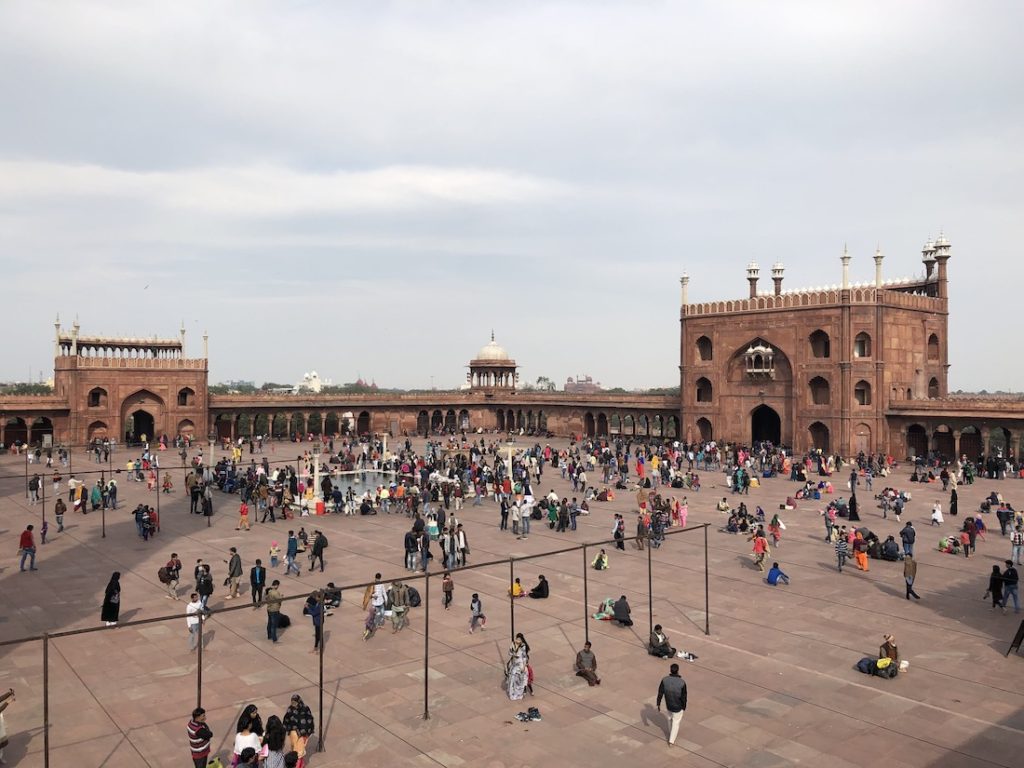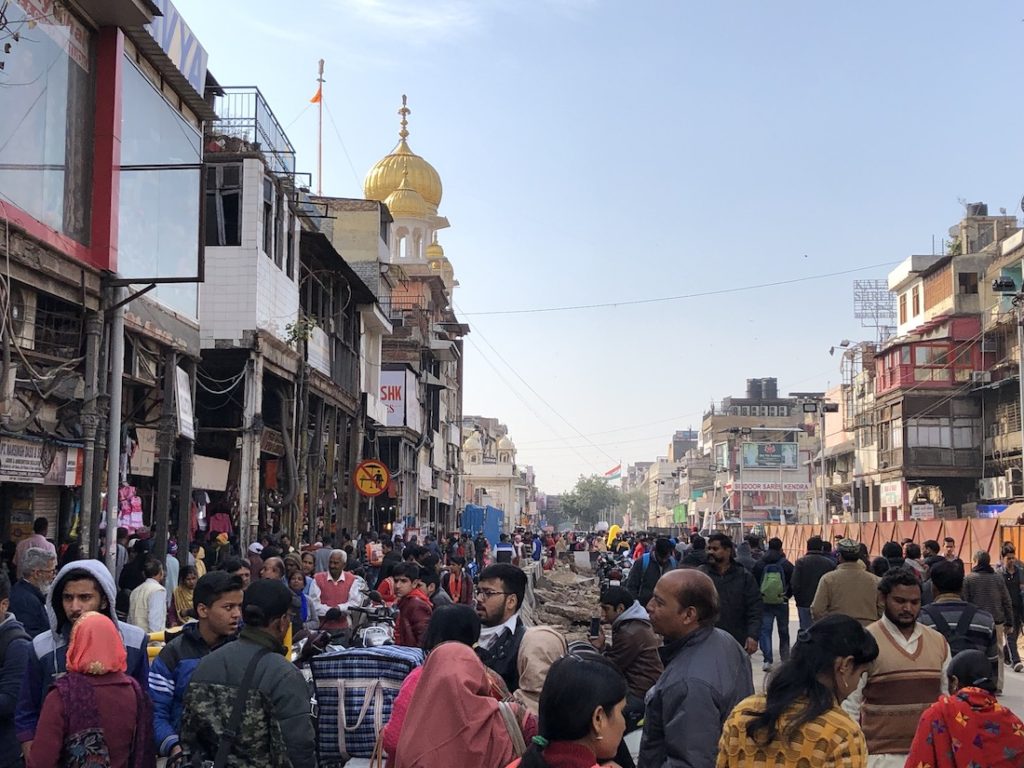The New Delhi of British architects Edwin Lutyens and Herbert Baker is green and orderly, with wide boulevards, Raj-era government buildings and substantial colonial bungalows. It couldn’t be more different to historic Old Delhi.
Situated just a few miles north of the showpiece architecture of the Raj, Old Delhi was built on the orders of Taj Mahal founder Shah Jahan as the capital of the Mughal Empire in the early 17th century. Known as Shahjahanabad, it was circled by defensive walls – some of which still stand – and was famed for its fine mansions and mosques. However, it’s not easy to spot its noble glories today, because it’s chaotic and cluttered, filthy, horrendously overcrowded, polluted and full of litter. It’s not a place to enjoy so much as experience. Ultimately it’s about accepting that this is what a teeming Indian city is all about and going with it.

My first experiences of Delhi weren’t good thanks to the touts who prey on naive, newly-arrived tourists. In fact, if someone had offered me a ticket home on that first day, I may well have taken it. With perfect bad timing, we’d also arrived in town on Republic Day, when much of the city’s roads are closed off to traffic, parades celebrate 21st century India and modern military jets zip through the skies in the sort of fly-past that shatters the ear drums. Tired and jet-lagged after arriving in the early hours, we left our hotel – Le Meridien – for a morning walk up Janpath, one of the main streets through New Delhi. We were aiming for Connaught Square, the heart of Lutyens’ 20th century city, but any thoughts I had that it would look as imperial and grand as it was in its glory days were soon dispelled. In fact, it looked a bit tatty, its grandeur well and truly faded.
Shops were closed for the holiday, the markets along Janpath were silent. Beggars, touts and stray dogs mingled with the crowds. We narrowly avoided being conned by a tout who latched on and didn’t let go, leaving me frustrated, angry and fed up. Fearful that he wouldn’t be the only asshole out looking for us, we retired hurt to the hotel and spent the afternoon recovering our balance, reading and waiting for the city to reopen.

That night, Old Delhi beckoned in the shape of Haveli Dharampura, a beautifully restored old mansion buried somewhere among the narrow, dusty lanes to the south of the famous east-west thoroughfare known as Chandni Chowk. Having been dropped off by a cab driver nearby, we couldn’t find it and soon became the target of the notorious touts. We fought on, trying our best to locate one of the district’s few surviving havelis amid the warren of gloomy alleys, and then miraculously found ourselves on the right one just as a group of musicians and a man on horseback squeezed past in a noisy and colourful procession. What it was all about I have no idea, but it allowed us to shake off our tormentors and added plenty of colour to start of our evening. It’s not something one sees in London very often!
The haveli, a haven of peace and sophistication, has a celebrated restaurant and we’d booked a date with their tasting menu. The food was very good, although some of the flavours were far removed from what I would recognise as Indian food back home – a bit too sweet and a bit too bitter at times. The biggest disappointment was the lack of booze, for Republic Day is a dry day in India and so, on a day when I really could’ve done with a beer, we had to content ourselves with bottles of water. Of all the stupid ideas… We climbed to the much-restored haveli’s roof to enjoy the views and admire the architecture of such a grand old town house, and then watched traditional Indian dancers put on a show for the diners. Several hours later, as we made our way home, the lanes were deathly quiet and lined with people asleep on the pavements beneath the stars and dust-encrusted blankets. The sheer number of them came as a shock.

The next day we wanted to visit the Red Fort, built as the palace and military stronghold of the Mughal emperors, but it was still closed for the Republic Day celebrations so we wandered off, disappointed, in search of something else to do. Around us exploded the bedlam of Old Delhi. Every square foot of space was taken up with people, tuk tuks, cars, motorbikes, rubbish and markets. Vehicles honked repeatedly – as they do in every Indian town and city – crowds surged and the dust filled my throat. I was overwhelmed, wondering what on earth had possessed us to choose Delhi as a destination.

We were aiming for the Jama Masjid, Shah Jahan’s huge mosque that stands amid and above the drama of Old Delhi. Surrounding it are the never-ending markets, where folk sell everything from colourful shirts to street food, and men’s pants to aged, rusting car parts. Stray dogs and cattle meander about, shitting copiously, men spit and the pollution leaves a metallic taste in the throat. The guide books suggest that the mosque is a haven of peace amid the lunacy but everything is relative and it was busy with tourists and believers during our visit. Once we’d found the right gate to enter, we took off our shoes and explored its grand courtyard, towering minarets and prayer hall, built in what would become a familiar mix of red sandstone and white marble. We climbed the steps of one of the minarets to a tiny viewing platform, which was hopelessly overcrowded, horribly unsafe and left Graham as close to a panic attack as it’s possible to get without actually having one, so we descended as quickly as we could to firmer ground. Despite the dramas, I felt a huge sense of relief that we’d found something in Delhi to visit that was both open and impressive.

The streets beyond the mosque and up around the nearby shopping area of Old Delhi, Chandni Chowk, are bonkers. Full of winding alleys and narrow streets, they’re cluttered and dirty, overflowing with traders and people trying to make ends meet. If nothing else, it’s a city of shopkeepers. Gleaming temples stand in marked contrast to the the worrying confusion of telephone and power cables that cling to most of the buildings. Chandni Chowk and its neighbouring maze of streets may be all over the place today, a collection of ancient shop signage and buildings that look as if they’re held up by little more than a prayer, but look closely and it’s possible to see the bones of some of the noble mansions that once were home to the wealthy and successful, the balconies and balustrades, the architectural cornices and elaborate doorframes. It’s a fascinating mix, unlike anywhere else I’ve been, and it would be tempting to find a chair, sit back with a beer on the roadside and just watch the day go by. But I didn’t.
In search of a metro station to take us back to the relative calm of New Delhi, we dodged touts, road works, crap, animals and drivers with a death wish. Crowds gathered around popular food stalls and a wide range of odours filled my nostrils, from exhaust fumes to incredible street food, from sweaty people to sewage.
Everything in Old Delhi, including the tuk tuks, cars, motorbikes, carts and vans, is used until it’s incapable of functioning. And even then, someone will take the shattered remains of what’s left and make something from it. There’s a lot to be said for that make-do-and-mend attitude in our throwaway world, even if it makes for a city that looks like it needs a damn good wash…

